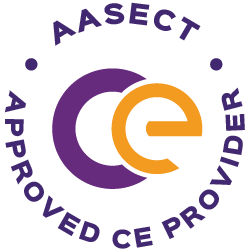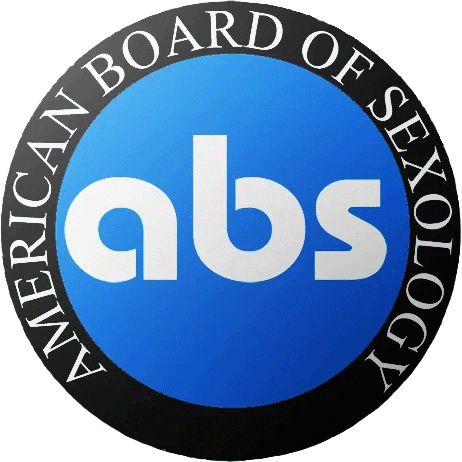Are you familiar with genograms? In this essay, we’ll explore what they are and how you can use genograms in your sex coaching practice.
Whether you’re a practicing sex coach or another sexuality professional, you probably know that the client interview is one of the most important parts of the whole sex coaching process. Understanding your client is the key to helping them with whatever issues they come in with. What comes up in the interview also gives you information about whether you should refer them out to a different professional.
The interview may be a call or a form to fill in that’s done before you actually meet in real life. Depending on the client, it can also be the focus of the first few sessions. During the interview, every sex coach focuses on understanding the client’s current situation and exploring their history. A genogram is a tool that might be really helpful in connecting your client’s past and present experiences.
A genogram is a form of family tree and it can be used to show your client’s family history in a graphic way. It also gives information about the types of relationships going on between family members. For a basic primer on how to create a genogram, read Genograms: Assessment and Intervention.
When you look at the genogram, you may notice the emotional patterns and processes present in the family. What’s more, a genogram emphasizes important events from a family’s life that could have a big impact on your client.
Using a genogram can be of great help to sex coaches, no matter who their clients are. One amazing aspect of sex coaching is that you may use tools in a unique way, designed specifically for your client, and genograms are no exception to this rule. If you want to learn about how genograms can help you in understanding your client’s beliefs about sex, read on!
This essay will also give you examples of how you can use genograms when working with people from diverse gender, sexuality, and relationship backgrounds.
Genograms Help to Understand Client’s Attitudes Toward Sex and Relationships
As a sex coach, you probably know that many factors influence your clients’ attitudes, beliefs, and values regarding sexuality. The societal and cultural impact on how we view sex is tremendous. We are not indifferent to what other people think and say about sex, and if we were, our clients would probably not ask us if their sexual preferences are considered “normal.”
The opinions of the people close to our clients—family members included—have an especially strong impact on your client’s perspective. That’s why during ASPEX, we are asked to recall the sexuality-related events that happened in our families, and our family members’ attitudes toward sex.
If you choose to create a genogram with your client, you may discover their views are similar to those of a family member. For example, if your client’s grandmother told them having sex before marriage is a sin, they may want to abstain from sex until after their wedding and they may be very anxious about their sexual debut—a scenario you may be familiar with if you watched the series, Jane the Virgin.
Your client’s perspective on sex may be even more rooted if the whole family shares similar views. Just imagine what can happen if the whole family has negative/positive views about sexuality and how this may influence your client. However, things get more complicated if different people from your client’s family have different views. These contradictory attitudes may leave your client confused about what path to follow, resulting in coming to a certified sex coach such as yourself.
A family’s beliefs about sexuality are powerful. Using a genogram is a great way to understand these patterns. To start using genograms to better understand the impact of family beliefs about sex on your clients, ask your clients to tell you all about the beliefs and stories about sexuality they were raised with.
Another characteristic of genograms helpful to sex coaches is that genograms show important events from the family’s history. As a sex coach, you may want to pay special attention to events related to sexuality. Include any pregnancy-related issues present in your client’s family or any history of sexual abuse on the genogram. Trauma can pass through generations, so awareness of these events can help both you and your client understand where some of their sex-related issues may stem from.
Genograms can also be used to see patterns of relationships in your client’s family. Were your client’s parents close and intimate or were they distant/conflicted? What love languages are/were used by members of your client’s family? Together with your client, consider how the relationships in their family influenced your client’s way of relating with others.
Genograms in Work with LGBTQ Clients

Photo by Markus Spiske from Pexels
Genograms were originally created to depict a biological family, but the family concept has evolved over time. Remember to ask your client about their definition of family and about who they want to include on the genogram. For example, more and more people consider their close friends as family members and prefer the concept of a chosen family. This concept can be especially useful if you work with members of the LGBTQ+ community.
Since many people still reject their family members based on their sexual orientation and gender identity, members of the LGBTQ+ community often prefer to choose or create a new family, based on love and support, rather than blood or marriage. It’s important to collaborate with your client on creating a genogram that includes people who have the most impact on what they think about sex and sexuality.
You may want to consider creating two separate diagrams, one of the “biological” family and one of the chosen family, as this could be helpful for your client. However, you should remember to always follow your client—it should be their decision whether or not you will prepare a genogram together and who will be presented there.
When you work with a person from the LGBTQ+ community, it may be important to include the dates of their coming out to their family members on the genogram. This can spark a conversation about others’ reactions to your client’s coming out and how it influenced their relationship. For transgender people, it may also be important to note their transition dates.
Genograms in Work with Clients Involved in CNM
If your niche is clients involved in consensual non-monogamy, using a graphical representation of their multiple relationships can be of great help. Polyamorous people often consider members of their polycule as family and/or close enough that they would like to include them on the diagram. Take a look at what the genogram of a polycule may look like in this comic by KimChiCuddles.
Here are example questions that a genogram can help you answer:
- What kind of non-monogamy is your client involved in? What does their relationship structure look like (i.e. are they living in a triad, in an open relationship, or some other configuration)?
- What are the relationships between the members of the polycule? Are they close/distant? Are they in harmony or is there a conflict?
- What kind of contract does your client have with each of their partners? Are they involved in practical monogamy with one partner but are emotionally non-monogamous with all of their partners?
- Who were the members of the polycule in the past and what did the relationships between them look like? Did it change with time? How?
Modify the Genogram to Your Client’s Needs
When you decide to use a genogram in your practice, you may want to get familiar with the types of symbols that are used to create them. However, it may happen that you won’t know what symbols to use to depict your client’s unique experiences. In this situation, you can do some online research to see if other people already created the symbols you need. As an example, take a look at this presentation that includes symbols for different gender, sexual, and relationship diversities. You can also get creative and design symbols specifically for your client. In the case of people involved in CNM, you may want to come up with symbols representing metamours, the feeling of compersion, and much more! Make sure to let us know how you will use genograms in your own practice in the comments.
Curious about training to become a Certified Sex Coach™? Join the next live Info Session to meet the SCU team and participate in a live Q&A!







